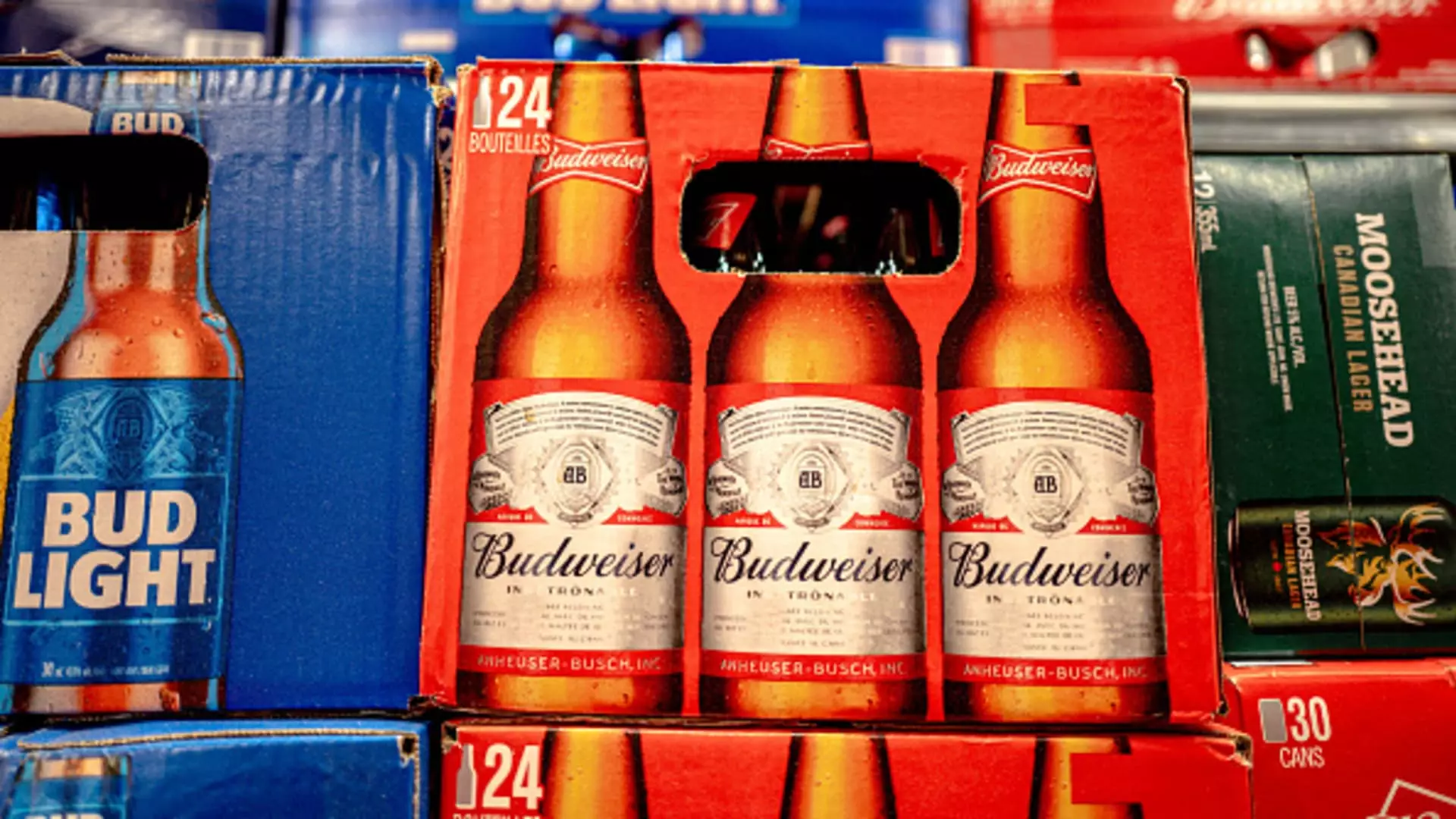AB InBev, the world’s largest brewer known for its popular brands like Budweiser, Corona, and Stella Artois, has recently shown remarkable resilience amidst challenging market conditions. The company’s shares surged by nearly 9% following the release of their fourth-quarter sales, which exceeded expectations despite an overall decline in volumes. This article delves into the factors influencing AB InBev’s performance, the emerging trends in the beverage industry, and the strategies the company seems to be adopting to navigate these changes.
In the fourth quarter, AB InBev reported a 3.4% increase in revenue, totaling $14.84 billion, which was notably higher than the anticipated increase of only 2.9% to $14.05 billion. This uptick in revenue over expectations demonstrates the company’s ability to maintain pricing power even in a low-demand environment. Nevertheless, it is critical to point out that total volumes saw a decline of 1.9% in the same quarter and a 1.4% decline over the entire fiscal year. The decline in volumes can primarily be attributed to weak consumer demand in significant markets such as China and Argentina, which has raised questions about the sustainability of AB InBev’s growth trajectory.
CEO Michel Doukeris has characterized the declines in consumer demand in these key markets as “very abnormal,” linking them to broader industrial weaknesses affecting overall consumer sentiment. Such insights highlight the company’s awareness of external environments’ impact on its sales, suggesting a strategic approach to mitigating risks. Moreover, the declining demand seems to be more pronounced among AB InBev’s beer products than its non-beer offerings, indicating a shift in consumer preferences that could have long-term implications for the brand portfolio.
While the CEO remains optimistic about the beer market’s resilience, evidenced by statements like “the category is very vibrant,” the ongoing decline in traditional beer consumption raises questions about the brand’s agility in adapting to changing consumer tastes. AB InBev appears to understand that the landscape is evolving, and while current beer demand may have robust momentum, a cautious stance is warranted as consumer behavior shifts.
Strategic Focus on Non-Alcoholic Offerings
The article underscores a notable trend in the beverage sector toward lower alcohol consumption and the increasing popularity of non-alcoholic beverages. AB InBev seems to be aware of this shift, as they strive to capture a broader consumer base by diversifying their product portfolio to include options like cocktails and non-alcoholic drinks. This movement resonates with a growing demographic of health-conscious consumers who are seeking lower-calorie alternatives, further emphasizing the need for companies to innovate continually.
This strategic pivot mirrors the actions of other industry players, such as Carlsberg, which has integrated non-alcoholic beverages into its portfolio following acquisitions like Britvic. Both companies are positioning themselves to capitalize on the changing landscape, catering to a demographic that values moderation in alcohol consumption. Doukeris’ insight into the consumption habits of health-conscious beer lovers suggests that AB InBev is keen on adapting while retaining its core values as a leading brewer.
Looking ahead, Doukeris has expressed optimism regarding the company’s gradual recovery and its focus on sustained EBITDA growth, targeting a range between 4% to 8% growth for 2025. Notably, the fourth quarter saw an impressive EBITDA increase of 10.1%, suggesting potential for continued profitability even among opposing volume trends. However, Doukeris has also identified foreign exchange rates as a significant concern for the upcoming fiscal year, reflecting the complexities of global trade dynamics.
Despite the looming challenges, the management’s approach toward tariffs, as Doukeris reassured that substantial discussions on tariffs were not expected this year, indicates a level of preparedness for potential market disturbances. Their proactive strategy of utilizing various levers to offset costs illustrates a forward-thinking approach that aims to maintain financial health amidst fluctuations in the global economy.
AB InBev’s recent financial performance showcases its ability to outperform expectations in revenue despite experiencing volume declines. The company is cognizant of shifting consumer preferences and appears to be strategically responding by diversifying its offerings to include non-alcoholic beverages. While there are challenges ahead related to market sentiments and foreign exchange rates, the company’s outlook suggests confidence in navigating the evolving landscape. AB InBev’s resilience may ultimately depend on its ability to embrace transformation while remaining true to its core identity as a leading global brewer.

